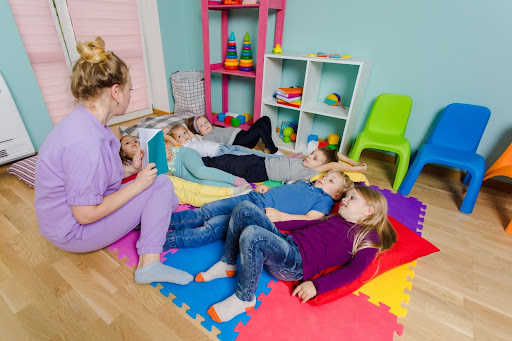
Sleep is one of the essential building blocks for developing children. It allows the body to rest and rejuvenate. Sleep is also needed to assist children’s immune systems and brain function. Safe sleep in childcare is essential knowledge.
The amount of sleep needed varies from child to child, but as a child care worker many of the children in your care will still require a day time nap or two depending on their age. The National Quality Standard recognises the importance of these naps, with Area 2, Element 2.1.2 highlighting that it is vital that “each child’s comfort is provided for and there are appropriate opportunities to meet each child’s need for sleep, rest and relaxation”.
Keeping Nap Time Safe
It’s clear that naps are important, so what do children need to have a safe, sound rest?
We’ve got five tips to help you minimise sleep risks and uphold the SIDS guidelines
- Temperature control: Overheating is a sleep risk for children, particularly for young babies. Make sure you don’t give children too many layers for sleeping and keep the blankets light and easy to kick off if needed.
- Keep the face clear: It’s an obvious one but a big risk factor and can require some extra care. Remember to remove hats, beanies, hooded garments, necklaces and anything else that could restrict a child’s airway or ability to breathe easily. Also keep blankets away from the face and avoid the use of pillows – especially for babies.
- Lay children on their backs: Sleeping on backs is the safest way to go for children, enabling them to breathe freely and easily. Older children may wriggle into a more comfortable position but starting them on their backs is recommended.
- Check sleeping children: Your role as child carer doesn’t stop while they’re snoozing. Make sure you check on children regularly during sleep times to ensure they are enjoying a nap that is safe and sound.
- Stick to the sleep policy in centres: Each child care centre should have its own sleep and rest policy. This policy should be in line with SIDS guidelines and informs parents and families of how the centre approaches nap times for children. In many centres families can have individual requests for their children. For example, not letting them nap past 3pm. Following policy ensures that children are given the highest quality care possible.
Help children and babies in your care nap in the safest way possible. Make sure you’re aware of your centre’s policy and individual children’s needs. If you have concerns about sleep policies or practices within your care setting, take a look at the safe sleeping recommendations put together by SIDS and Kids here or even ask your knowledgeable Practical Outcomes trainer.



